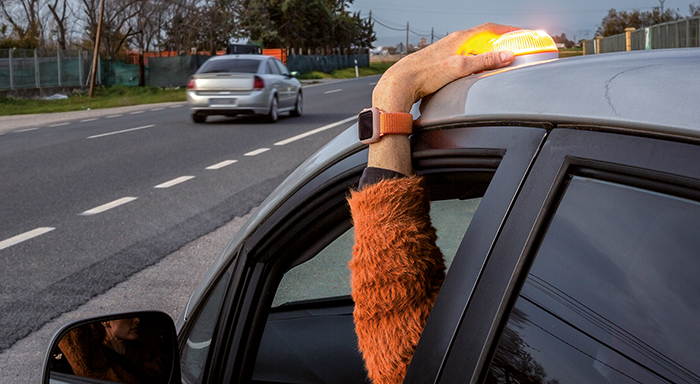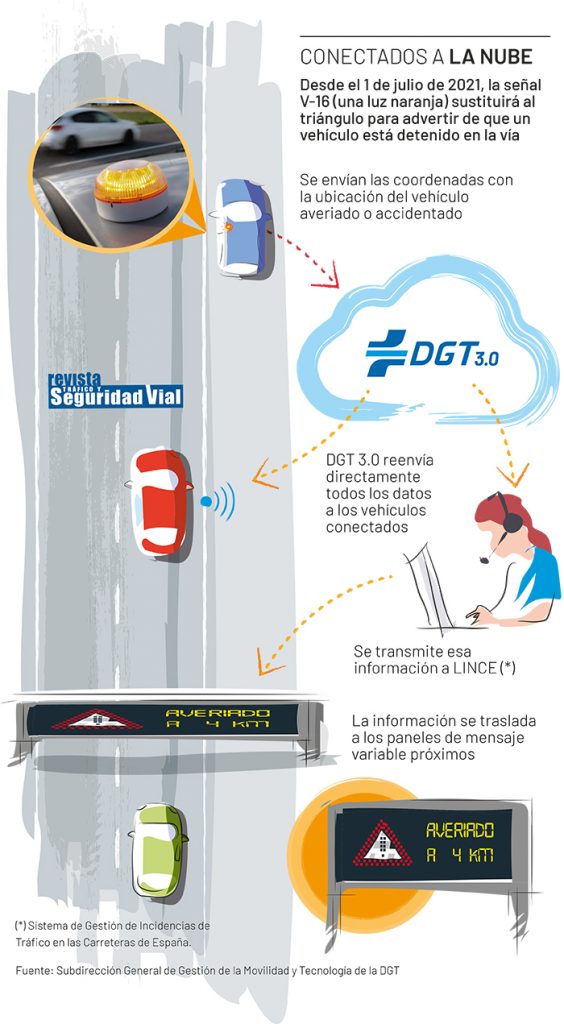Goodbye to the warning triangle
In the event of a breakdown or accident, the light can be placed on the highest part of the vehicle without needing to get out of it.

Wednesday 17th March 2021 | PRESS RELEASE, translated by MIKE SMITH
This summer, Spain will begin the process of phasing out the traditional warning triangles that drivers have been required to carry in their vehicles since July 1999 and replacing them with an orange flashing light which can be placed on the highest part of the vehicle to provide warning.
The V-16 signal device will be available from July 1st 2021, and will be used alongside the warning triangle until January 1st 2026, after which only the orange flashing light device should be used as a means to provide visibility for a vehicle that has stopped.
A high number of of fatalities occur when drivers leave their vehicles to place or collect warning triangles after their vehicle have been forced to stop on the highway. The new light can be placed on the highest part of the vehicle, such as the roof, without the need for the driver or any other occupant to leave the vehicle. The light also incorporates a geolocation system that, once activated, will send details of its location, and thus the location of the stopped vehicle, to the DGT 3.0 cloud every 100 seconds to warn other connected vehicles and to the LINCE traffic management system which allows highway information panels to be updated with the appropriate warning.

According the data provided by the DGT (excluding Cataluña and País Vasco), 32 people have been killed after getting out of the car since 2019. According to new regulations, it is a “general rule” that occupants should only leave a vehicle if there is a safe place off the road and always on the opposite side to the flow of traffic. If it is not safe to exit, occupants must remain inside the vehicle with the seat belt buckled.
Information Source
Press Release – Ministerio del Interior / DGT



